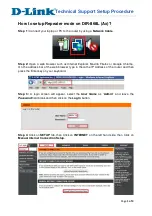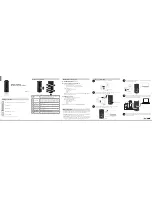
NINA-B4 series - System integration manual
UBX-19052230 - R06
Design-in
Page 21 of 45
C1-Public
•
Avoid stubs on the transmission lines; impedance matching components on the transmission line
should be placed with the connected pad over the trace.
•
Avoid unnecessary component on RF traces.
2.3.2
NINA-B4x6 design-in
NINA-B4x6 modules include an internal PCB trace antenna that is integrated on the module PCB using
antenna technology from Proant AB. The RF signal is completely internal and not connected to any
module pin.
NINA-B4x6 modules cannot be mounted inside a metal enclosure. Metal casings or plastics that
include metal flakes should not be used. Metallic-based paints and lacquers should also be avoided.
The pre-certification of NINA-B4 modules minimizes the effort of certification testing in the test lab.
2.3.2.1
NINA-B4x6 antenna layout considerations
For optimal operating performance, observe the following layout considerations when developing the
antenna layout:
•
NINA-B4x6. To enable good antenna radiation performance, it is important to place the module on
the edge of the main PCB with the antenna facing outwards.
•
A ground plane extending at least 10 mm on both sides of the module is recommended, as shown
in Figure 6.
•
Include a non-disruptive GND plane underneath the module with a cut out underneath the
antenna, as shown in Figure 7.
•
Observe the antenna “keep-out” area on all layers, as shown in figures Figure 6 and Figure 7.
•
NINA-B4x6 has four GND pads located close to the antenna, as shown in Figure 4. Connect these
pads to GND. Detailed dimensions of the footprint, including those related to these GND pads, can
be found in the NINA-B4 series data sheet [2].
•
To avoid degradation of the antenna characteristics, do not place physically tall or large
components closer than 10 mm to the module antenna.
•
To avoid any adverse impact on antenna performance, include a 10 mm clearance between the
antenna and the casing. Polycarbonate (PC) and Acrylonitrile butadiene styrene (ABS) materials
have less impact on antenna performance than other types of thermoplastic.
•
Include plenty of stitching vias from the module ground pads to the GND plane layer. Ensure that
the impedance between the module pads and ground reference is minimal.
•
Connect all ground pads to the ground plane.
•
Consider the end products use case and assembly to make sure that the antenna is not
obstructed by any external item.















































